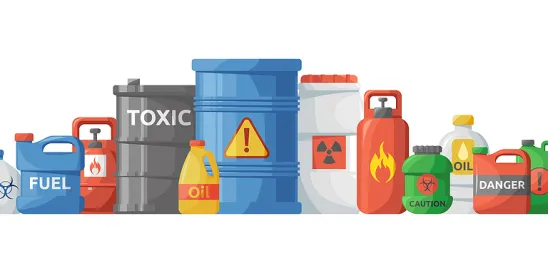In December 2023, the Environmental Protection Agency (EPA) announced five new chemicals that will be prioritized for risk evaluation as prescribed by Section 6 of the Toxic Substances Control Act (TSCA) as amended in 2016. The chemicals in the spotlight include:
- Vinyl Chloride
- Acetaldehyde
- Acrylonitrile
- Benzenamine
- 4,4’-Methylene bis(2-chloroaniline) (MBOCA)
Public comment on the prioritization of all the above chemicals is due March 18, 2024. The EPA is interested in comments on such things as hazard and exposure potential, persistence and bioaccumulation, instances of storage near sources of drinking water, any significant changes in conditions of use, significant changes in production, and any other information relevant to their risk potential. Keller and Heckman attorneys and scientists anticipate that all five candidates will be designated as “high priority,” at which point EPA will initiate risk evaluation for each of the five.
In The Fallacy of Prioritization of Existing Chemicals for Risk Evaluation Under TSCA, Keller and Heckman Counsel and past Deputy Assistant Administrator for the Office of Chemical Safety and Pollution Prevention at EPA David Fischer debated the problematic nature of EPA’s prioritization process. The chemical prioritization process, which takes between nine and twelve months, involves identifying the chemical candidate followed by 90 days for public comment, screening review, proposed priority designation, another 90-day comment period, and the final priority designation as a high priority.
In addition, the EPA is seeking feedback on ten future prioritization candidates. These include:
- 4-tert-Octylphenol
- Benzene
- Bisphenol A
- Ethylbenzene
- Naphthalene
- Styrene
- Tribromomethane
- Triglycidyl isocyanurate
- Hydrogen fluoride
- N-(1,3-Dimethylbutyl)-N’-phenyl-p-phenylenediamine
EPA’s Data Gathering Efforts
Of note, under TSCA Section 8(c), the EPA mandates that manufacturers, importers, processors, and downstream users of the widely-used chemical MBOCA submit records detailing any significant adverse health and environmental effects by February 26, 2024. MBOCA, commonly used in the manufacturing and processing of rubber, plastics, and resins, has already been deemed a likely human carcinogen, with extensive data showing that it damages DNA. However, it is uncertain how much information will be submitted to EPA from this data call-in. Additionally, under Section 8(c), manufacturers must keep records of allegations of significant adverse effects on human health or the environment. These records, which can be written or oral, must be maintained for five years, and employee allegations must be retained for an astonishing 30 years. Allegations, even without proof, require inclusion of source, type, and length of exposure in each report.
Test Orders Anticipated for “High Priority” Chemicals
Once a substance is formally designated as “high priority,” it is anticipated that EPA will issue test orders. These orders must include justification for the necessity of testing.
A major trade organization sued EPA over a previously issued test order. As argued before the United States Court of Appeals for the District of Columbia Circuit in December 2023, that lawsuit focused on the test order’s justification and whether the EPA adequately explained the data need. The outcome of this lawsuit will certainly impact future test orders.
Risk Evaluation Fees Surpass $5 Million
This year, the risk evaluation fees likely will exceed $5 million (to be divided among manufacturers). Exemptions exist, and companies manufacturing these chemicals are encouraged to review the criteria for exemptions and inform the EPA if they qualify. Meeting the exemption criteria, however, could prove challenging, especially the requirement for engagement in exemptions five years before and after the EPA published a preliminary list of manufacturers subject to fees.
Next Steps: Communication and Compliance
Companies dealing with the prioritized chemicals must proactively communicate their conditions of use (COU) to the EPA. Developing information about potential exemptions during risk evaluation, notifying the agency about ongoing studies, and conveying relevant information during comment periods will be essential. The five chemicals are well-known, and companies should be able to determine the most sensitive health or environmental endpoints and their COU and then assess whether occupational exposures are lower than a potential existing chemical exposure level (ECEL) that EPA could propose in a subsequent risk management rule.





 />i
/>i
